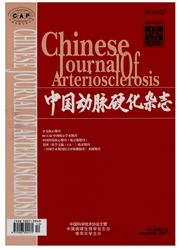

 中文摘要:
中文摘要:
动脉粥样硬化性肾动脉狭窄(ARAS)是一种预后不良的进展性疾病,其危险因素复杂多样,通过分析其危险因素有助于早期干预、辅助诊疗并改善预后。层次分析法(AHP)是一种多决策分析方法,广泛应用于医学领域。本文首先简要介绍ARAS的危险因素,并概述AHP基本原理。重点介绍基于AHP构建ARAS危险因素预测模型的过程,探讨AHP在临床领域的应用意义。
 英文摘要:
英文摘要:
Atherosclerotic renal artery stenosis(ARAS) is a progressive disease with poor prognosis,and its risk factors are complex and various. Analysis of ARAS risk factors is helpful for early intervention,adjuvant diagnosis and therapy,and improving prognosis. Analytic hierarchy process(AHP) is a kind of multi decision analysis method,which is widely used in medical field. In this paper,firstly,the risk factors of ARAS are briefly introduced,and the basic principles of AHP are summarized. This paper focuses on the process of constructing ARAS risk factors prediction model based on AHP,and discusses the significance of AHP application in clinical field.
 同期刊论文项目
同期刊论文项目
 同项目期刊论文
同项目期刊论文
 期刊信息
期刊信息
